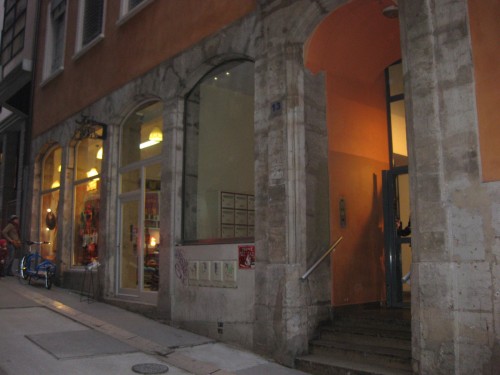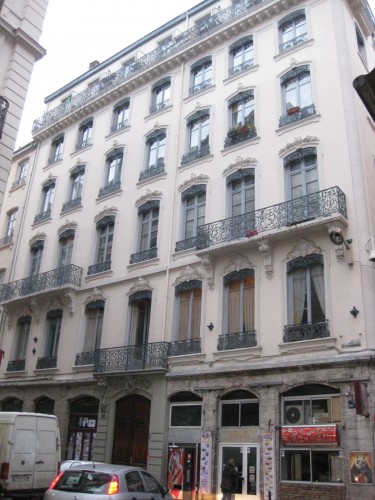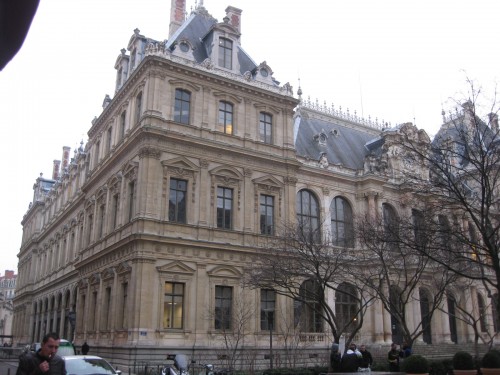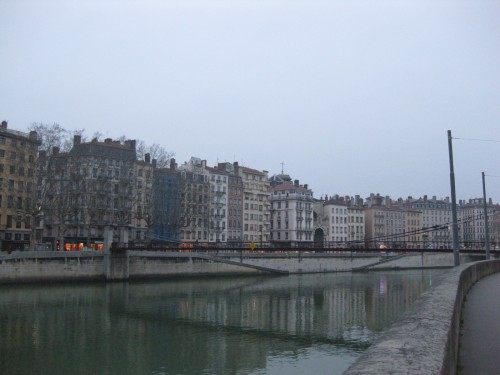Searching for the Dutch-Paris Escape Line
Dutch-Paris Sites in Lyon
Before Dutch-Paris existed, John Weidner started his Resistance work by helping Dutch Jews who made their own way to Lyon. Weidner and a French friend owned a textile shop there on the rue du Griffon. He himself had to abandon that shop in September 1943 when the Gestapo came calling for him there. But Dutch Jews were using it for shelter as late as February 1944. It was a small shop on a narrow street running uphill from the large plaza in front of the grand mairie (city hall). Today it looks like this and lies just around the corner from a police station.
Being a bachelor whose parents and sisters lived in different occupation zones, Weidner lived in a hotel on the rue Sainte Catherine, a short walk from his shop. Weidner traveled extensively for the import/export branch of the business, so he probably wasn’t home very often. He used both the hotel and his usual business travel to build and run Dutch-Paris. This is what the front of the hotel looks like today.
Many of the Dutch Jews whom Weidner and his colleagues helped did not know Weidner before they arrived in Lyon. Instead, they went to the Dutch consulate or its refugee assistance office in this solid building on the rue de la Bourse. The consulate offered money, legal assistance and help navigating the requirements of French law and bureaucracy. Occasionally the staff sent people to Weidner with the hint that he could get people into Switzerland, which, of course, he could.
All of these buildings and the lodgings of the most active member s of Dutch-Paris in Lyon lay in the Presqu’île neighborhood of the city between the rivers Saône and Rhône. This was mostly just coincidence, but it did make running a clandestine organization easier at a time when ordinary people used public transportation or their feet to get around and curfews made being on the streets at night dangerous. Fortunately for our resisters, many of the trains they used ran in and out of the small gare du Perrache at the tip of the Presqu’île. It’s not such a long walk from that station to any of the Dutch-Paris places, but it would have been an almost impossibly long walk from the gare du Lyon that today’s travelers use, especially after curfew.
- Tags: France, John Henry Weidner






Leave a reply